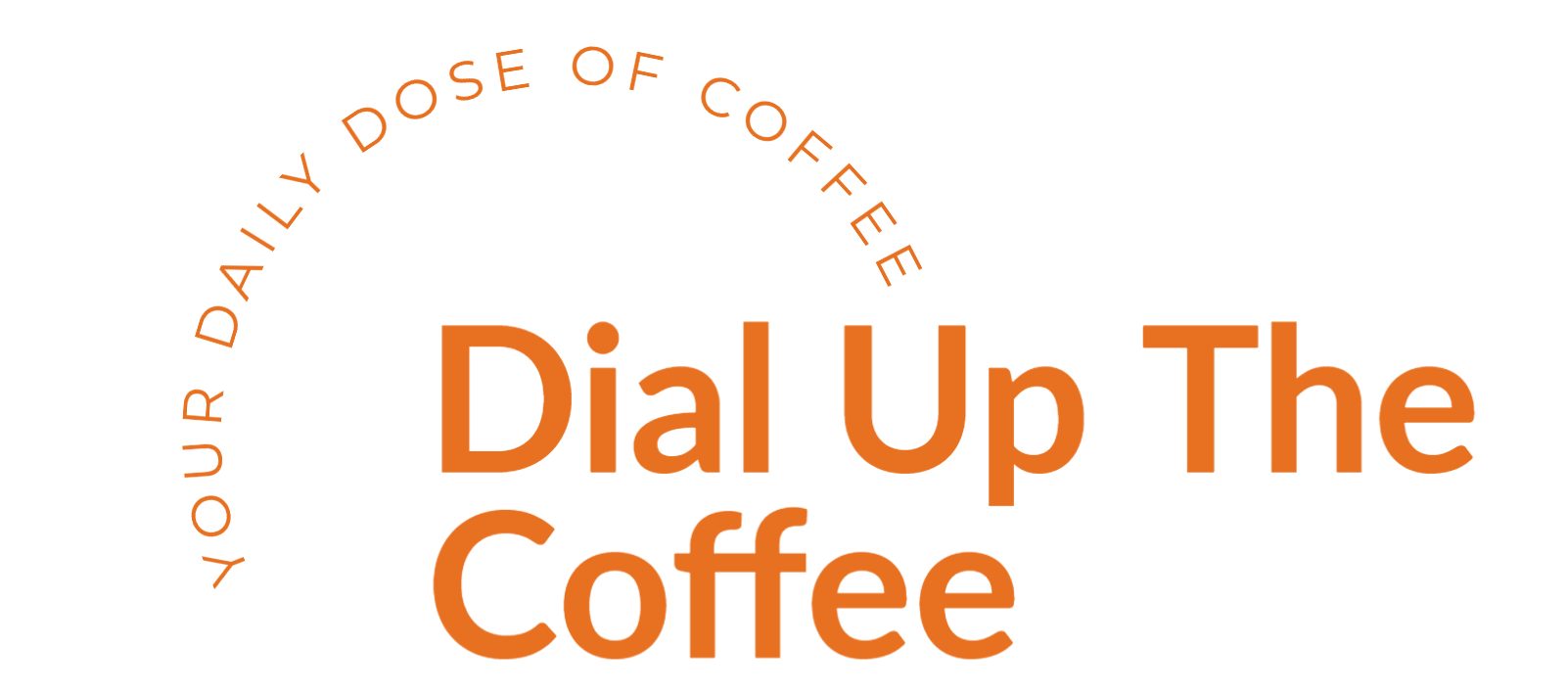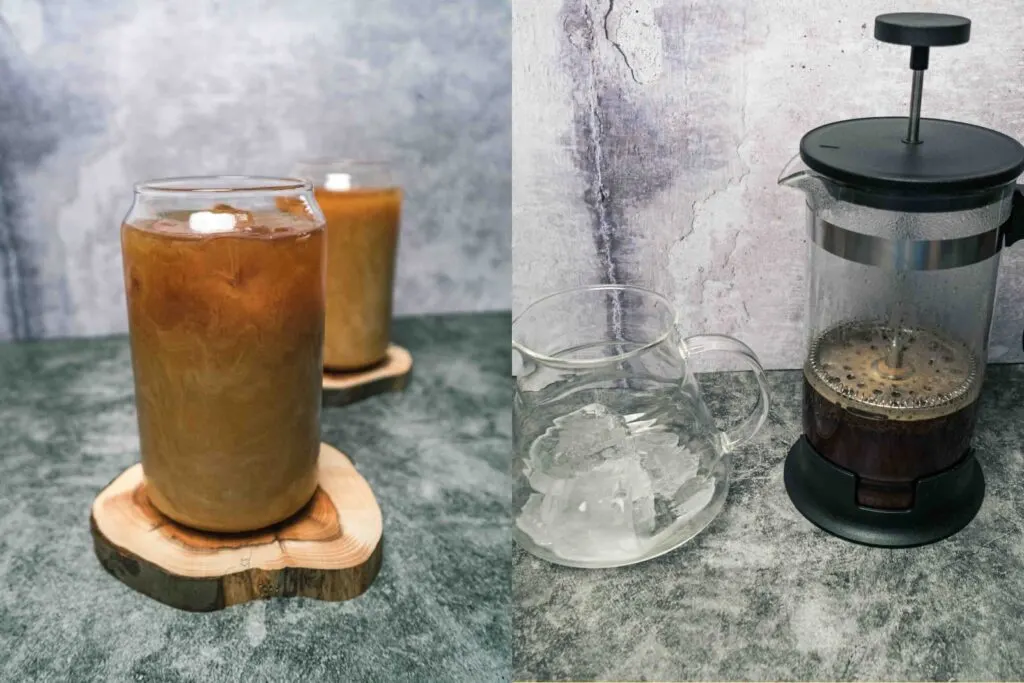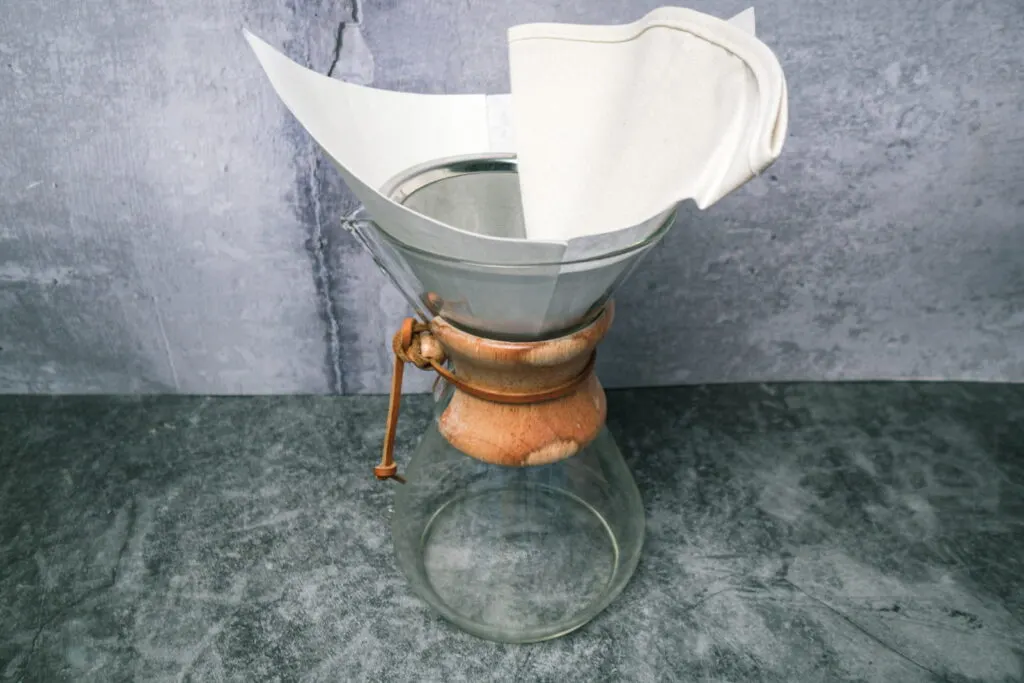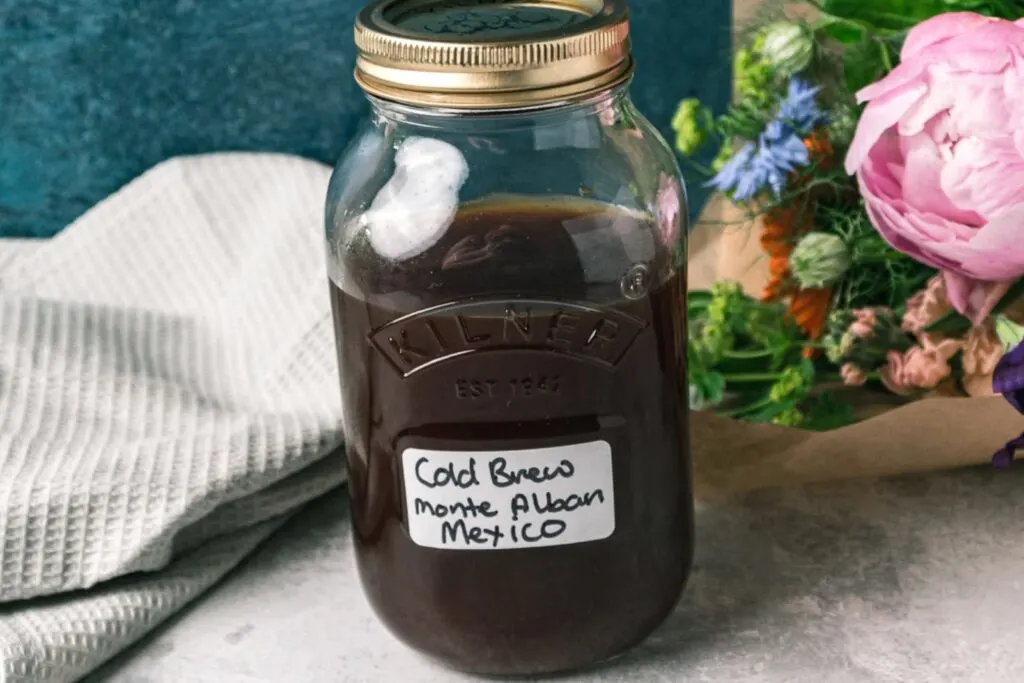Using coffee grounds as a way to help plants grow is a popular concept. Coffee lovers everywhere can get value from their used-up grounds by incorporating them into their gardens. There are even coffee shops that give away used coffee grounds for free to avoid having to haul them away.
Here are 7 great ways you can use coffee grounds in the garden:
- In Composting
- As Fertilizer
- As Mulch
- As Pest Control
- To Prevent Harmful Fungus
- To Grow Beautiful Roses
- To Boost Your Carrot Harvest
There are plenty of benefits to using your coffee grounds in your garden instead of just tossing them in the trash. There are also some precautions every gardener should be aware of before simply throwing coffee grounds to their plants.
Disclaimer: Hi! this post may contain affiliate links which will take you to online retailers that sell products and services. If you click on one and buy something, I may earn a commission, see my Affiliate Disclosure for more details.
Read below to find out more about the different ways to use coffee grounds in your garden. You will also learn how it can help or harm your plants, which plants do the best with coffee grounds, and what other food waste you should be using in your garden.
Use Coffee Grounds in Your Compost

Coffee grounds make a fantastic organic material to add to your compost bin or pile to give it a nice kick in the energy department.
While they may be brown colour, coffee grounds are actually what is referred to as green material in compost. Green material is the part of compost that adds the nitrogen needed for the compost to heat and decompose properly. Used biodegradable coffee filters can be composted as well.
Make sure when you add something as nitrogen-rich as coffee grounds to your compost that you balance it out properly with brown materials. If you have too much nitrogen in your compost then you could end up with a terrible smell, overheating, and compost that isn’t breaking down as it should.
It’s also possible to use coffee grounds in vermicomposting, a type of composting that relies on worms to aid in the breakdown process. When you add coffee grounds to your vermicomposting bin, you should be cautious of adding too much. You don’t want to harm your worms.
When you add your coffee grounds to your vermicompost, make sure to mix it with other kitchen waste such as banana peels and vegetable scraps. Your worms should have no trouble going through them, and they will love them.
Use Coffee Grounds as Fertilizer
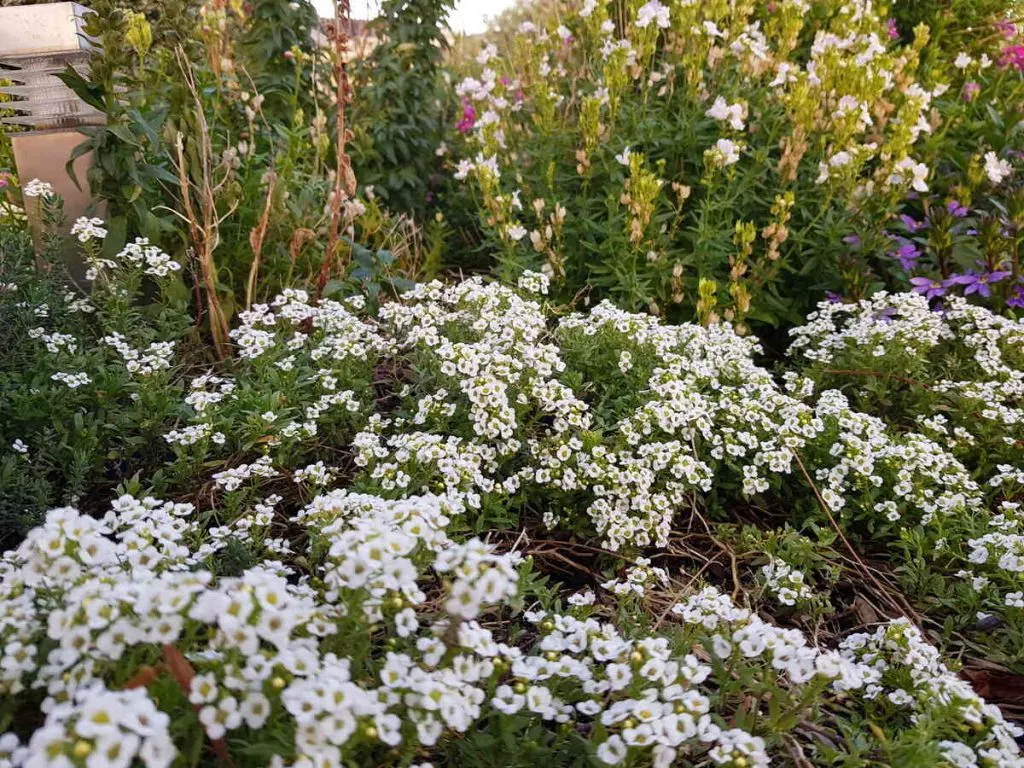
If you’re planning to throw your coffee grounds in with your compost, chances are you’re already planning to use it as fertilizer. However, there are ways you can use coffee grounds as fertilizer without composting them first.
You can work some used coffee grounds into the soil around the stem of the plants. This is especially useful for green leafy plants that are heavy feeders like tomatoes and squash.
Thinly sprinkle some coffee grounds on top of your garden soil just to offer it those extra nutrients. Remember that the nutrients won’t be present immediately after you add the coffee grounds. They have to begin breaking down before anything is released.
If you want a different way to use your coffee grounds as fertilizer, you can steep 2 cups of coffee grounds in 5 gallons of water overnight to create a liquid fertilizer to pour into your garden. It is also good for bottling and spraying on leaves and stems to help feed them.
Coffee grounds act as a slow-release fertilizer when mixed into or sprinkled on top of your soil. They offer important nutritional value to your plants over time so that they can grow big and strong.
Use Coffee Grounds as Mulch
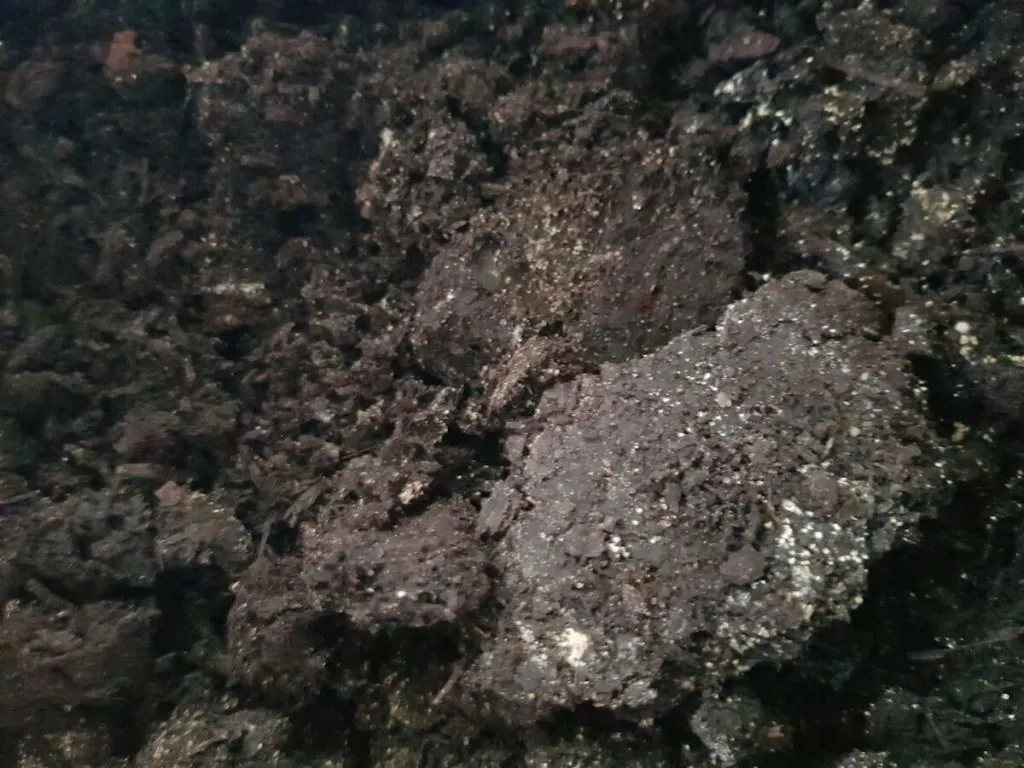
Because it is easy to get coffee grounds in rather large quantities, whether by drinking a lot of coffee or picking up used coffee grounds from coffee shops, it makes the perfect organic candidate for mulching.
When you use coffee grounds as mulch, you have to be extremely careful with how much you are laying down. Thick blankets of coffee grounds can suppress your plant growth and even starve your plants of the water they need. Coffee grounds tend to clump together and create a barrier that has the opposite effect of what you want for your garden.
The solution to these problems is to mix your coffee grounds with other organic materials to discourage them from becoming to thickly compacted on top of your garden. Using leafmold is a good option to mix with coffee grounds to make a good mulch for your plants.
Coffee grounds can also be useful for spot mulching. Add a 1/2 inch thick layer of coffee grounds on top of whatever organic mulch you already use around your coffee-loving plants. This will help provide them with even more nutrients.
Use Coffee Grounds as Pest Control
If you have a problem with slugs and snails in your garden, coffee grounds may be a good way to keep them at bay. It is said that the caffeine that remains in the coffee grounds repels these little pests. It may also be due to the texture potentially damaging their soft bodies.
As another plus, coffee grounds make a natural repellant for cats. They don’t like the smell of coffee grounds and will be discouraged from using your garden as a bathroom. It is also said they may keep rabbits from munching on your vegetables.
Sprinkle a circle around your plants or a barrier around the edge of your garden using coffee grounds. They may lend a hand to keeping harmful pests out of your garden and keep your plants safe and sound.
Use Coffee Grounds to Prevent Harmful Fungus
Research shows that coffee grounds can naturally help prevent certain types of fungus and wilts in your plants. The natural fungus colonies in decomposing coffee grounds help fight off the types of fungus that cause harm in your garden.
If you are growing plants that are more susceptible to wilts like peppers and eggplants, it may benefit you to incorporate some coffee grounds in the planting process. Throw a little bit into the hole before transplanting so that they have a better chance of staying healthy.
Use Coffee Grounds to Grow Beautiful Roses
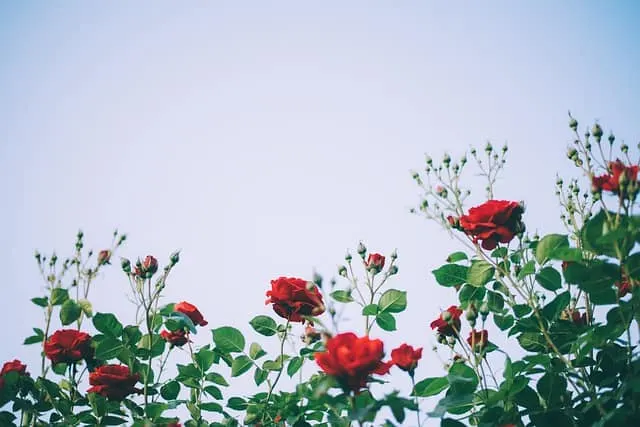
When combined with banana peels, coffee grounds can result in beautiful blooming roses that any gardener would be proud of. Like with any plant, coffee grounds provide nutrients and nitrogen that aid in plant growth.
The banana peels give the roses a boost of potassium which strengthens their immune system and keeps them alive in tougher climates. A lack of potassium can lead to weak stems, discolouration on leaves, and underdeveloped buds.
It is best to incorporate the banana peels at planting by placing some of it in the hole under the rose plant. Once your rose bush is in place, dig some coffee grounds into the soil around it to give it that punch of nutrition. This combination can help lead you to award-winning blooms.
Use Coffee Grounds to Boost Your Carrot Harvest
Carrots and other root vegetables love coffee grounds. They can lead to a better harvest if they are implemented during planting to give the carrots lots of nutrients.
You can work your coffee grounds into the soil where you plan to plant your carrots, giving them a nice place to germinate. You can also put dry coffee grounds in a cup along with your carrot seeds and shake it all up. Sprinkle the mixture of coffee grounds and carrot seeds into rows in your garden and let them grow.
Planting radishes along with your carrots is always a good recommendation. Radishes love coffee grounds as well and germinate much faster than carrots. This can help to mark your rows more easily in the beginning.
Coffee Grounds and Houseplants
For some people, it’s not possible to have a full garden outside, but that doesn’t mean those coffee grounds are useless. If you have plants sitting around your home, you can just as easily use your coffee grounds to provide them with some extra nutrition.
If you do want to add your used coffee grounds to your houseplants, don’t overdo it. You don’t have to throw a ton on top of the potting soil to affect. In fact, too much could harm your plants.
Put your coffee grounds in with your acid-loving houseplants and don’t water them unless the soil is dry to the touch. You don’t want them to get too much water or cause the coffee grounds to make the soil too acidic.
Coffee grounds are most effective when planting large house plants. Spread a layer about 1/2 inch thick on top of the soil and then cover that in about 4 inches of your favourite mulch to help keep everything aerated properly. If you put a layer that’s too thick, the coffee grounds could lock together and prevent your plant from getting water.
Coffee Loving Plants
Not all plants can stand up to the strength of coffee grounds in the soil, but others are more than happy with the additional nutrition. If you’re concerned about your plants and whether or not coffee grounds would be good for them, it’s best to look into it beforehand.
Because coffee grounds tend to raise the ph level of the soil, any acid-loving plants are going to thrive from the use of them.
Plants That Love Coffee:
- Azaleas
- Blueberries
- Cabbage
- Carrots
- Cranberries
- Currants
- Daffodils
- Elderberries
- Fruit Trees
- Gardenias
- Holly
- Hydrangeas
- Lilies
- Mushrooms
- Onions
- Parsley
- Peppers
- Potatoes
- Radishes
- Rhododendrons
- Soybeans
- Squash
- Strawberries
- Sugar Beets
- Sweet Potatoes
- Tomatoes
- Turnips
Benefits of Coffee Grounds in Gardening
It’s clear that your garden makes a welcoming home for your leftover coffee grounds. If you were wondering what good they can alongside your plants, here are some ways they can benefit your garden.
They help the soil hold more water. It can be difficult for plants to get enough water in super dry places or in times of drought. Adding coffee grounds to the soil can improve its water retention, meaning it will be able to hold more water and hold it longer. Because of this, the plants will be able to grow better with less watering.
They attract worms to your garden. Earthworms are fantastic little helpers in your garden, even if you don’t know it. They tunnel through the soil and create natural channels for oxygen and water to flow. Earthworms also help break down organic materials and leave behind nutrients that are extremely beneficial to plants.
They keep the soil from being too compact. It’s important for there to be aeration in your soil so that the roots of your plants can get everything they need from it. Incorporating coffee into your soil breaks up any potential compacting and keeps space open for your plants to grow as they should.
They provide drainage of excess water. If there is too much water just sitting around, it can lead to a greater risk of diseases in your plants. Coffee grounds help in breaking down the soil so that there is enough space for extra water to drain away after the plants have all they need.
They won’t end up in a landfill. Because you’re giving your used coffee grounds a new life instead of throwing them away, they won’t end up in a landfill where most of the waste is already made up of thrown out food. No matter how small the amount, it still benefits the environment to recycle your coffee grounds.
Warnings About Using Coffee Grounds for Gardening
With all of the tips and benefits to add coffee grounds to your garden, there will always be precautions as well. Some people swear off using coffee grounds to grow their plants at all. If you are thinking of using your leftover coffee grounds for gardening, there are a few things you should keep in mind.
The leftover caffeine could harm other plants. The reason coffee plants evolved to have caffeine in the first place was to keep other plants from growing in the same area they were. There will always be caffeine in even used coffee grounds, which may have adverse effects on the plants you are trying to grow.
They make the soil more acidic. Where some plants are concerned, this is awesome. However, not all plants can grow and thrive in acidic soil. Be sure to find out if your plants enjoy acidic soil or not before throwing your spent coffee grounds in with them.
They could be harmful to your dog. If you have a dog that loves to roam about and sample new things, you should be careful about leaving coffee grounds laying over your garden plot. It’s best to mix them into the soil well enough to avoid consumption or add them into compost instead.
Other Leftovers to Use in Your Garden
Along with used coffee grounds, there are a number of other leftovers that may benefit your garden and help your plants grow. If you don’t want to throw everything out, here are some other things you can use in your garden.
Eggshells may be fragile, but they are nutrient powerhouses where plants are concerned. Eggshells provide your garden with calcium, magnesium, potassium, iron, and phosphorus. All of these things are incredibly important to healthy plant growth, making eggshells an amazing addition to any garden.
Orange peels, as well as other citrus peels, are perfect for gardening. As they decompose, these peels will add nitrogen, phosphorus, and potassium to the soil for your plants. They are also excellent for pest control as they can destroy the waxy coating on ants and suffocate them.
Banana peels make a wonderful natural fertilizer for your garden. When they are buried, they decompose quickly and release potassium, calcium, phosphorus, and magnesium. These nutrients are essential to healthy plant growth. Bananas are also useful in keeping pests away.
Using nut shells as mulch can help keep everything nice and aerated. They don’t break down as quickly as most other things so they will be around for a long time to help out.
Leftovers from peppers can be blended, strained, and mixed with water in a spray bottle to be used as a pest repellant. Just spray the mixture on your plants to keep unwanted pests at bay.
Blended vegetable scraps make wonderful food for plants like tomatoes and peppers that are considered heavy feeders. Using any vegetable leftovers for new plant food may increase your harvest.
Even Used Coffee Grounds Can Be Valuable
Coffee is such a popular drink, and making it always leaves behind the spent remains of all those coffee grounds. These little beauties still hold value even after providing you with the caffeine you need to get going every day.
If you are growing acid-loving plants in your garden, those coffee grounds are a great way to give them an extra boost of nutrients. Using coffee grounds as fertilizer can help your soil retain water more effectively and keep it nice and aerated, so your plants have all they need to grow strong and healthy.
Coffee grounds in gardening are debated but often touted as being a valuable asset that most people already have on hand every morning. Chances are throwing them to your plants are going to make them just as happy as that cup of coffee makes you. It’s definitely worth giving it a try.
